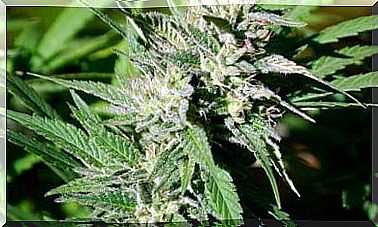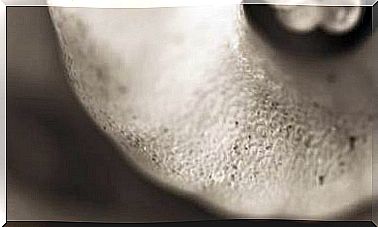Vaccines: Protection Or Danger?
Vaccines are complex medications with side effects that often only become known over time. All information about the vaccine and the individual situation should be taken into account.

Vaccination has become a common and massive health practice. Between 1950 and 1960 a vaccination schedule was established , not mandatory, very simple, but over the years it has become increasingly dense and complicated: it is vaccinated continuously from zero to 24 months and sporadically from the first two years until the end of life.
Vaccination is a medical act that requires informed consent – in Spain it is voluntary, never mandatory – in which a polypharmaceutical is used that initially aims to produce infection in a controlled and reduced manner.
With vaccines there is a peculiar situation, since families do not even have the possibility, at the time of vaccination, to read the leaflet that accompanies any medication. It is common to get vaccinated without knowing the composition and without having information about its adverse effects.
History of vaccines: lights and shadows
Attempts to find a remedy for infectious epidemics have always been recognized and praised. The history of vaccination dates back to the late Middle Ages, when variolization was practiced . It consisted of inoculating the suppuration of smallpox among people who lived near a population where the disease was acting.
Injections with cow serum
In the 19th century, it was observed that women who milked cows with a variant of smallpox did not get human smallpox. The serum of the animals began to be injected into the people. Laboratories existing at that time began to manufacture rabies, tetanus, diphtheria and smallpox sera.
Post-vaccination serum sickness
Towards the year 1860, the appearance, after serum inoculation, of an acute allergic reaction was called this . At that time the composition of the serum was unknown, but over the years the presence of proteins such as albumin, globulin, fibrinogen and antibodies was discovered.
Active immunization
After the Second World War, active immunization began at a time when some bacteria, some viruses and the way to manipulate them and combine them with substances such as aluminum salts or formaldehyde are known.
Animal experimentation
From 1920 to the present, millions of animals have been slaughtered to make “vaccines.”
How vaccines work today
Vaccination produces a controlled and reduced infection. This generates and maintains for a time in the immune memory a quantity of antibodies that are collectively intended to protect against a new infectious epidemic. If the vaccine stimulates immunity, the induced memory can last for a minimum of 6 months and a maximum of 8 years.
To extend this memory beyond 6 months, adjuvants such as aluminum salts, squalene or diphtheria toxin are used. Vaccines that carry these components are called conjugates. This is the case of the pertussis vaccines, meningitis C and B, pneumonia or pneumonia, human papilloma and Haemophilus influenzae (Hib).
Vaccines: authentic “polypharmaceuticals”
Vaccines on the market contain up to 55 components, among which are recognized toxic substances. They are composed of active biological ingredients and substances with allergenic, tumor and inflammatory effects. They may also contain residues from the manufacturing process.
Ethanol, phenol, formaldehyde, B-propriolactone, kanamycin, gentamicin or neomycin act as antiseptics or inactivators, but they are not free of toxic effects.
The thimerosal (a mercury salt) is known for being related to autism. Although manufacturers tend to substitute it, it is still found in trace amounts in some vaccines.
The phosphate and aluminum hydroxide increases the immune response (and inflammatory). They have been linked to the development of autoimmune and neurological disorders.
The polysorbates 20 and 80 are emulsifiers that have been associated with toxicity to the ovaries.
Single antigen vaccines are safer than multipurpose vaccines
Vaccine Precautions
Among the most frequent and serious negative side effects (one person every 1,000 / 10,000 doses) are meningoencephalitis; paralysis; epilepsy; autism; ADHD; respiratory, digestive and skin allergies; thyroid, neuronal, and pancreatic vasculitis; the alterations of the coagulation or the descent of platelets (thrombus or platelettopenia).
The vaccine can even produce metabolic failure and cardiorespiratory arrest with subsequent death ( one postvaccinal death occurs for every 2 million doses ).
Most current vaccines are multivalent, which multiplies the risks, and contains a multitude of ingredients.
In the detailed technical sheets of each product – they can be consulted at www.aemps.gob.es/cima – the contraindications and recognized side effects are specified.
Postvaccinal infections
After vaccination, it is possible to contract the infection that is to be avoided in the cases of influenza, chickenpox, measles, pertussis, diphtheria, tuberculosis, meningitis, hepatitis vaccines. , rubella, mumps, pneumonia and human papilloma.
When to exercise caution
Like any medicine, the vaccine has its limitations and its adversities.
I do not recommend carrying out vaccination in the following cases:
- Having suffered from the infection.
- Have antibodies of the infection to protect.
- Present allergy to any of the components of the vaccine.
- Being pregnant or seeking pregnancy.
- Suffering from a stable or progressive neurological, blood or clotting disease.
It would also limit vaccination :
- When there has been a sudden death in the family of the infant or adult after some vaccination.
- When the vaccination has begun, if the appearance of any alteration in the health of the vaccinated person is observed, the vaccination program should be temporarily stopped until it is known what has happened.









